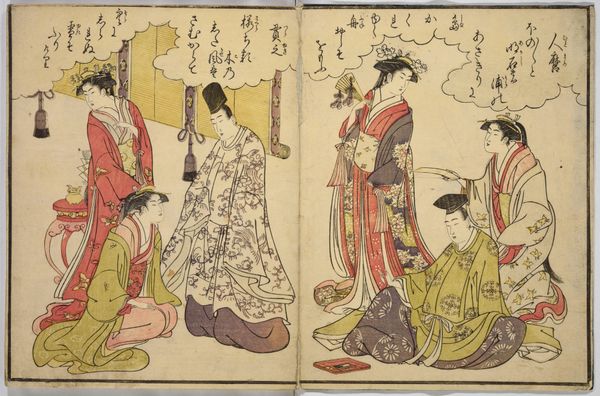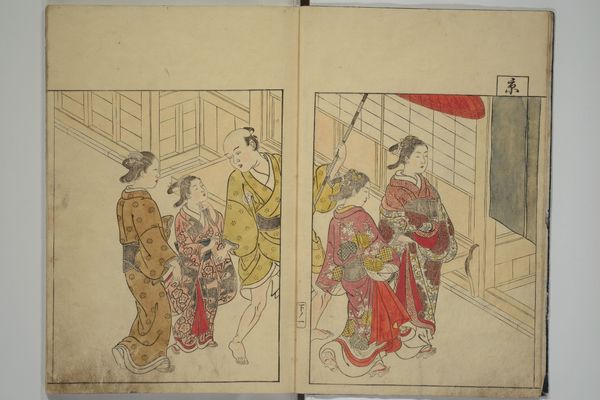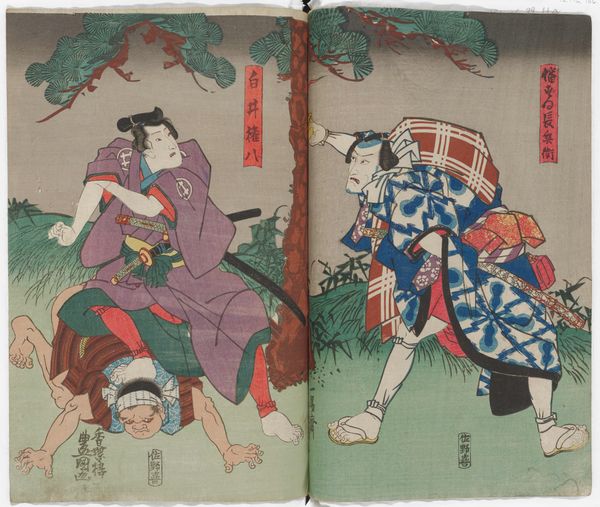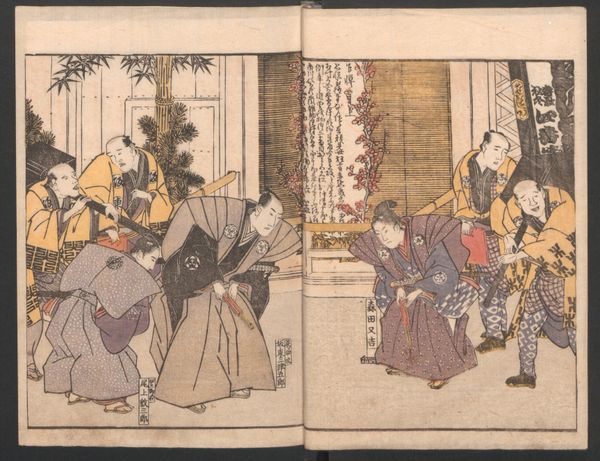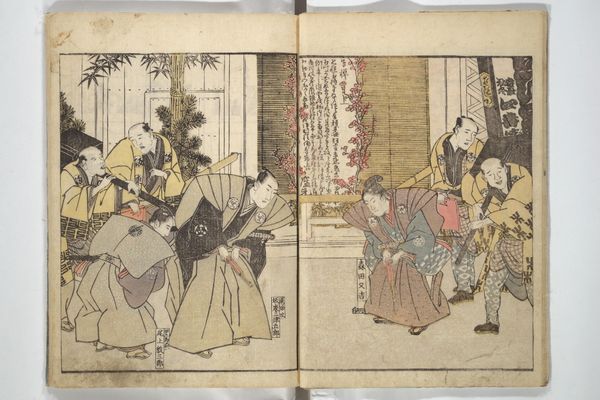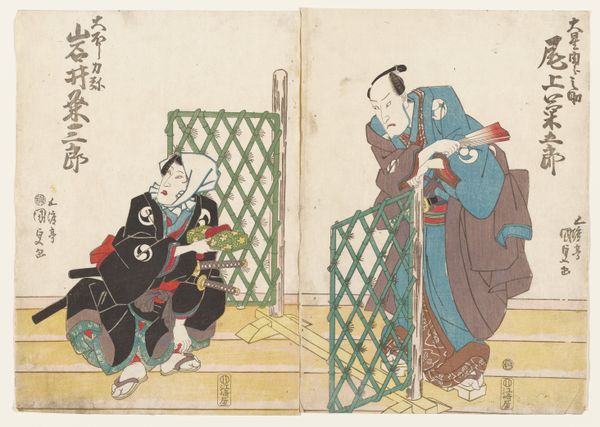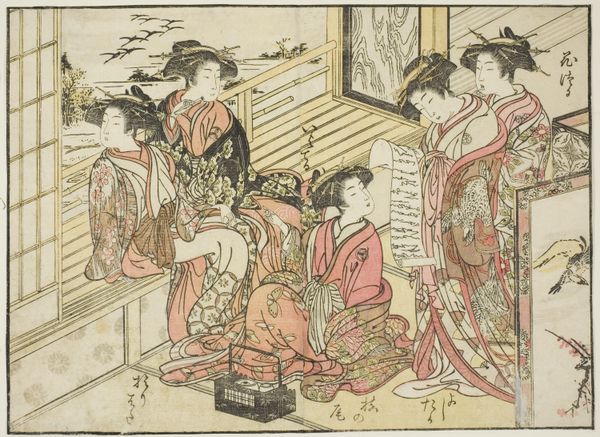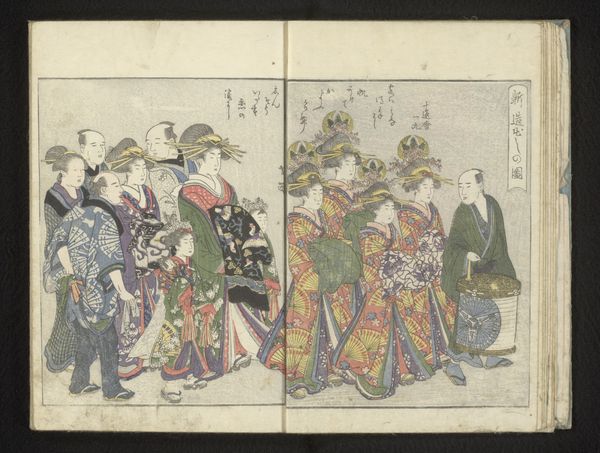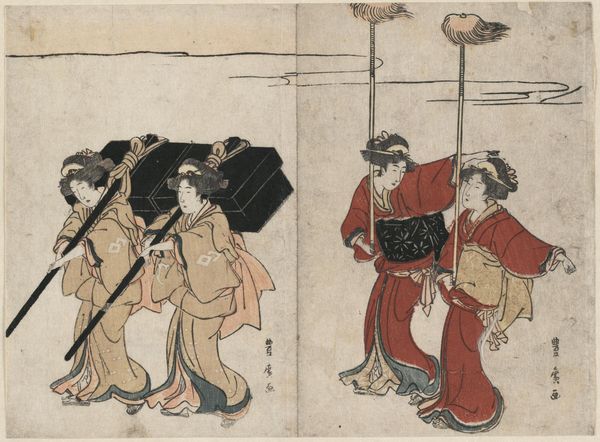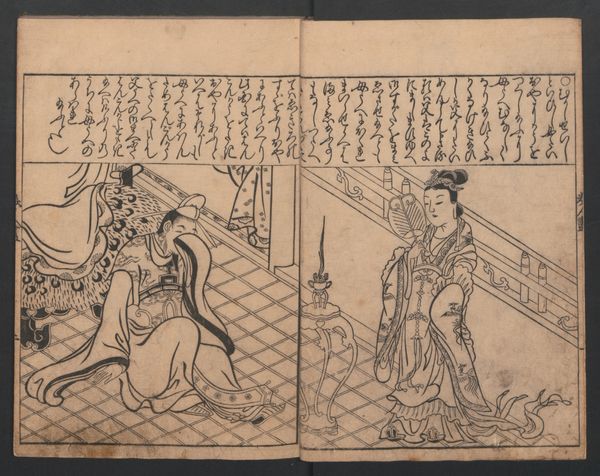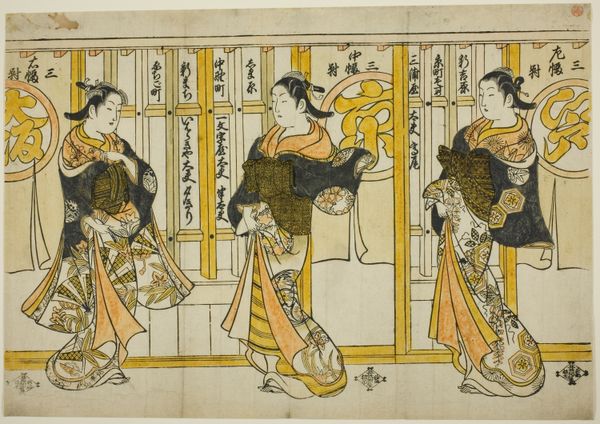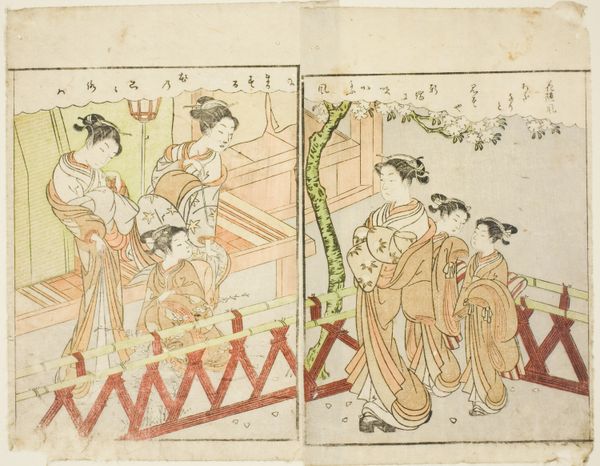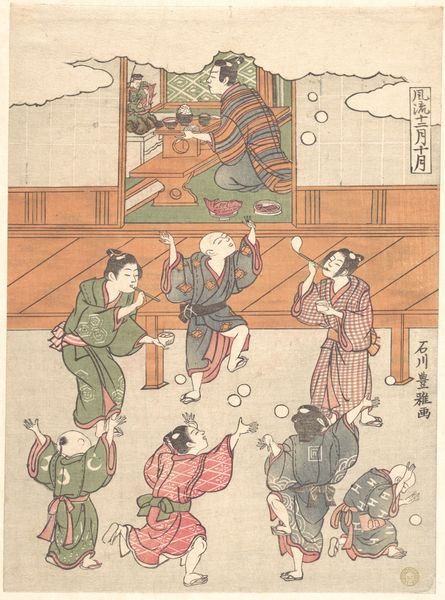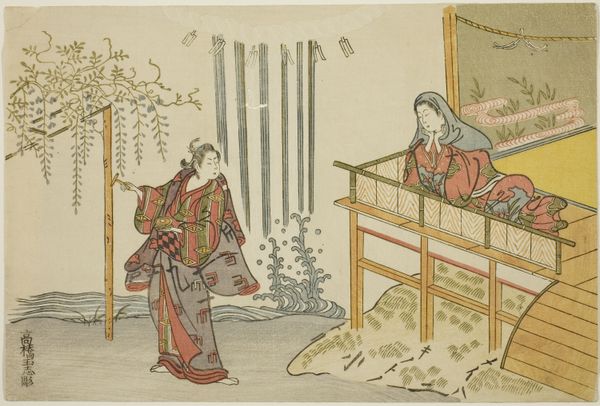
Picture Book of Evergreens Possibly 1731 - 1738
0:00
0:00
print, woodblock-print, pendant
#
portrait
# print
#
book
#
asian-art
#
ukiyo-e
#
japan
#
figuration
#
woodblock-print
#
genre-painting
#
calligraphy
#
pendant
Dimensions: 5/16 x 7 5/16 x 10 13/16 in. (0.8 x 18.5 x 27.4 cm)
Copyright: Public Domain
Curator: Here we have a page from "Picture Book of Evergreens" by Nishikawa Sukenobu, a Japanese artist, likely created between 1731 and 1738. Editor: It’s interesting; my first impression is how delicately this domestic scene is rendered using what looks like a series of flat planes. The figures have a quiet elegance to them. Curator: Sukenobu was a key figure in the ukiyo-e movement. The woodblock printing process was central to disseminating art to a wider public. It is also important to remember how deeply woodblock prints were tied to consumer culture during the Edo period. These books reflect a burgeoning interest among merchants and the rising middle class in genre scenes and depictions of daily life. Editor: Right, you can almost feel the texture of the woodblock and see the layering of colors that created the final image. Wood as a material speaks volumes, doesn't it? These prints became quite affordable due to the division of labor—artists, block cutters, printers, and publishers each playing a part. We can tell how popular and valued these artworks were because these are hand-painted with visible brushstrokes, further animating the scene. Curator: Precisely. Notice how the arrangement of figures emphasizes their social status. There are details to the textile that are clues to one’s financial standing or role in society. These seemingly straightforward depictions often served to reinforce prevailing social hierarchies of the era. They reflect how visual culture played a critical role in defining and solidifying these identities within the wider Japanese context. Editor: You see the social structures at play here, I immediately go back to thinking about the materiality: the pigments derived from minerals, plants, painstakingly applied—a tangible connection to nature embedded in urban life. Even the act of bookmaking is considered, showing both the labor and beauty interwoven. Curator: Yes, it is certainly both. Understanding this print asks us to think critically about the intersections of artistic production and broader societal values. Editor: Indeed. There’s such depth to unpack, all stemming from these careful, considered materials.
Comments
minneapolisinstituteofart almost 2 years ago
⋮
Nishikawa Sukenobu, a print artist and book illustrator, was fascinated by the fashions and behaviors of women of different social classes, a curiosity that his readers also shared. In this book, Sukenobu offers a view into the daily lives of women alongside portraits of historically famous women.Here, two copies of the same book look different because one is plain and the other handpainted. Once purchased, owners could treat the books however they desired, including coloring in illustrations.
Join the conversation
Join millions of artists and users on Artera today and experience the ultimate creative platform.
